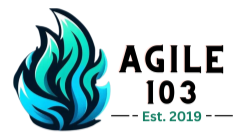Facilitated by TJ Badru
In the fast-paced world of Agile development, risks are inevitable. However, Agile methodologies provide unique frameworks to identify, assess, and mitigate risks proactively. Our session, Agile Risk Management, will equip you with practical tools and strategies to manage risks effectively while maintaining flexibility and delivering value.
Why Risk Management Matters in Agile
Traditional risk management often involves lengthy documentation and rigid plans that struggle to keep up with dynamic project environments. Agile Risk Management, on the other hand, is:
. Proactive: Continuous risk identification and mitigation throughout the project lifecycle.
. Collaborative: Involving all team members and stakeholders in risk discussions.
. Adaptive: Allowing for quick responses to new and emerging risks.
. Value-Driven: Prioritizing risks that could impact the delivery of customer value.
Key Principles of Agile Risk Management
1. Continuous Risk Identification
Agile teams regularly identify risks during sprint planning, retrospectives, and daily stand-ups. This ongoing process ensures potential issues are addressed before they escalate. Learn more about continuous risk assessment at PMI’s Pulse of the Profession.
2. Prioritizing Risks Using the Risk Burndown Chart
A Risk Burndown Chart helps visualize risk exposure over time, enabling teams to track how risks are being mitigated throughout the project. Explore the use of burndown charts at Agile Alliance.
3. Embracing Fail-Fast Techniques
Agile promotes fail-fast principles, encouraging teams to experiment and learn quickly from failures. This approach minimizes the impact of risks by addressing them early. Learn about the fail-fast concept at Harvard Business Review ().
4. Leveraging Risk-Based Testing
By focusing on high-risk areas during testing, teams can ensure that the most critical aspects of the project are robust and reliable. Dive deeper into risk-based testing with Atlassian.
Benefits of Agile Risk Management
Implementing Agile risk management practices offers several advantages:
. Increased Project Resilience: Agile teams can adapt to changes and unexpected challenges more effectively.
. Enhanced Transparency: Regular risk discussions ensure all stakeholders are aware of potential issues.
. Improved Decision-Making: Data-driven risk assessments help prioritize actions based on their potential impact.
. Faster Problem Resolution: Early identification and mitigation of risks reduce project delays and cost overruns.
How to Prepare for the Session
. Review Agile Fundamentals: Familiarize yourself with Agile principles and frameworks.
. Identify Common Project Risks: Reflect on challenges faced in previous projects and consider how they were managed.
. Bring Specific Scenarios: Prepare questions or examples of risk-related challenges to discuss during the session.
Don’t let risks derail your Agile projects.
Join our Agile Risk Management session to learn proactive strategies for navigating uncertainty and ensuring project success.
Register now to gain the skills needed to manage risks with confidence!
